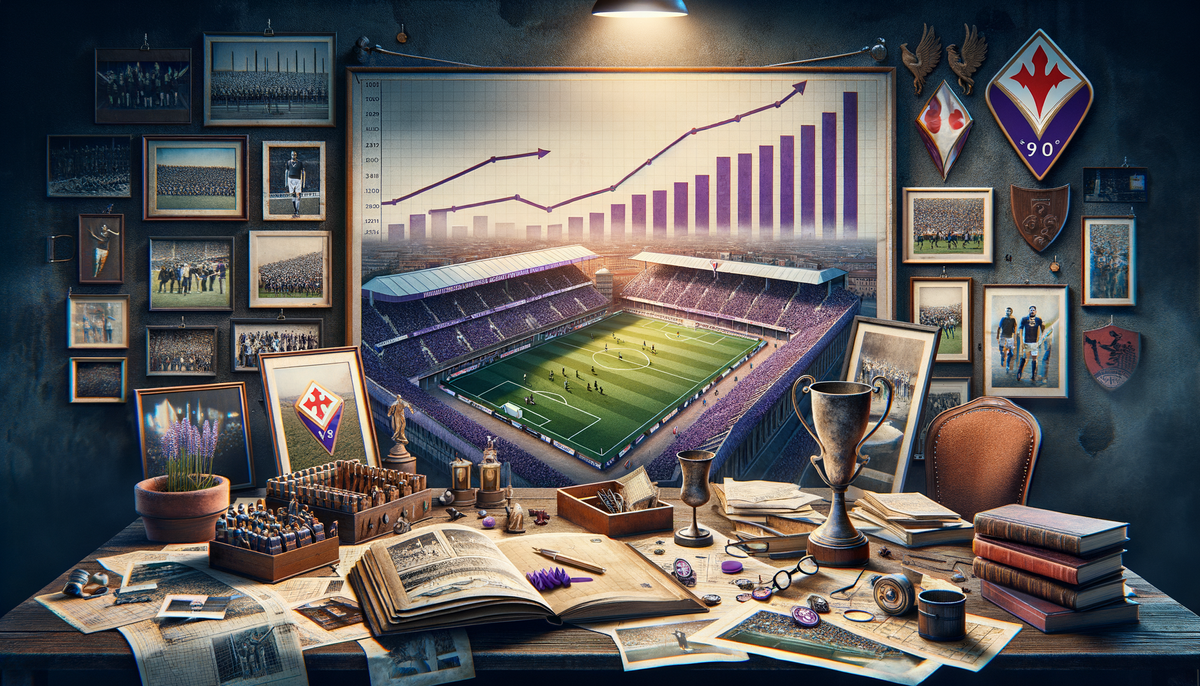Fiorentina: Past Glory, Present Challenges, and Future Aspirations
Explore Fiorentina's storied past, present challenges, and future ambitions in the world of Italian football.

Fiorentina: Past Glory, Present Challenges, and Future Aspirations
In the realm of Italian football, few clubs boast the rich heritage and passionate support that ACF Fiorentina, commonly referred to as Fiorentina, commands. This week's spotlight is on Fiorentina, a club synonymous with tradition, resilience, and vibrant history. From its inception in 1926 to its current endeavors in Serie A, Fiorentina remains a symbol of Italian football culture. [1](https://www.gazzetta.it/Calcio/Conference-League/01-05-2025/betis-fiorentina-live-diretta-semifinale-conference.shtml), [2](https://www.corrieredellosport.it/news/calcio/conference-league/2025/05/01-140367149/betis_siviglia-fiorentina_diretta_conference_league_segui_la_semifinale_d_andata).
Introduction to Fiorentina
Founded on the 29th of August 1926, by the merging of CS Firenze and PG Libertas, Fiorentina was established under the guidance of Marquis Luigi Ridolfi Vay da Verrazzano, with the vision to represent Florence with a single strong football entity. Initially, the club sported red and white, reflecting the city’s heraldic colors, but soon adopted the iconic purple, a decision inspired by Fiorentina’s desire to emulate Hungarian giants Újpest. Today, they grace the Stadio Artemio Franchi with a capacity of over 43,000, an emblem of Florence's rich footballing culture. [3](https://onefootball.com/en/news/palladino-conosciamo-il-valore-degli-avversari-su-dodo-41047427)
Historical Successes and Setbacks
Fiorentina’s journey through the annals of football history is marked by pinnacle achievements and significant challenges. Achieving Serie A status in the 1930-31 season was a turning point, positioning Fiorentina among Italy’s elite. Their maiden Coppa Italia trophy in 1939-40 set the stage for their Golden Era in the 1950s and 60s, highlighted by two Serie A titles and a European Cup Winners’ Cup victory in 1961. [4](https://www.gazzetta.it/Calcio/Conference-League/01-05-2025/betis-fiorentina-live-diretta-semifinale-conference.shtml)
The period following the golden years tested Fiorentina’s resilience, with financial difficulties culminating in bankruptcy and restructuring in 2002. This led to their relegation and temporary rebranding as Florentia Viola. However, the early 2000s saw a resurgence with notable cup victories, marking a determined return to Serie A.
Recent Developments
The modern incarnation of Fiorentina is one driven by ambition and curated by astute leadership under Rocco B. Commisso. With Raffaele Palladino at the coaching helm, the club seeks to reestablish its competitive edge both domestically and in Europe. Finishing 8th in the 2023-24 Serie A season, Fiorentina continues its quest for consistency and success, reflecting the club’s ongoing transformation and strategic planning. [5](https://www.corrieredellosport.it/news/calcio/conference-league/2025/05/01-140367149/betis_siviglia-fiorentina_diretta_conference_league_segui_la_semifinale_d_andata)
Fiorentina's Culture and Identity
Fiorentina’s identity is deeply entwined with its unique colored kit and rich cultural backdrop. The purple attire, a deliberate choice, exemplifies the club's distinctiveness in Italy’s football canvas, while their historic stadium in Florence embodies both tradition and contemporary ambition. Fiorentina’s enduring appeal and the devotion of its fanbase underscore their influence in Italian football. [6](https://onefootball.com/en/news/palladino-conosciamo-il-valore-degli-avversari-su-dodo-41047427)
Practical Takeaways for Football Professionals
For professionals within the football industry, Fiorentina’s story offers invaluable insights into the significance of strategic leadership and brand identity. Their journey illustrates the impact of cohesive management and the resilience needed to navigate financial trials while prioritizing competitive goals.
Engaging with Fiorentina’s methodologies can offer lessons on fostering an inclusive team culture that resonates with broader community identity. Moreover, adapting to changes while maintaining core values is a paradigm that sustains longevity in competitive sports industries.
Conclusion and Call to Action
In conclusion, Fiorentina exemplifies a fusion of tradition and modern strategic management that new and established clubs can learn from. As they continue to navigate today’s competitive landscape, embracing their landmark history while looking forward to future glories remains key. For deeper insights into Fiorentina and to explore opportunities for collaboration in football expertise, visit newsomix.com and discover how we can partner in enhancing your football journey.




